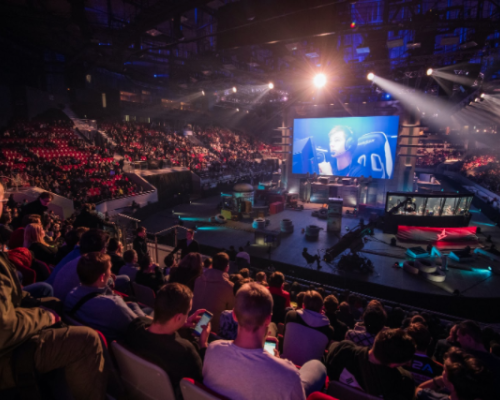Everything You Wanted to Know About Esports (But Were Afraid to Ask)
Esports have arrived on the K-12 education scene and—by all appearances—they aren’t going anywhere. More than 170 U.S. colleges offer roughly $16 million per year in esports-related scholarships. Yet the explosive growth of the industry has not led to growth in the number of educators who actually understand what esports are. “Minions,” “MOBA,” “Nerf”... Does this sound familiar? If you need a full esports dictionary, you’re not alone. But, don’t worry, you haven’t missed the esports boat! Here are some frequently asked questions to get you up-to-speed. Ready, Player One?
What in the World Are Esports and Who Is Playing Them?
Esports are online games played competitively. These can be solo games (every player for themselves) or team-based games, and those teams can be in the same room or can be playing together from all over the world. The average esports player is in their 30s, and there are currently 69 countries (and counting) in the International Esports Federation.
Why Should Educators Pay Attention to Esports?
It’s not just about who is playing them; it’s also about who is watching them! More people watched the League of Legends tournament in 2019 than tuned in for the superbowl. This 1.5 billion dollar industry employs journalists, sportscasters, advertisers, game developers, event coordinators, cybersecurity professionals… and that’s not even counting the players themselves. As the industry continues to grow, more esports careers will emerge. Teams, scholarships, degrees, and classes are already being offered in higher education, which means that in order to serve our students, K-12 education must be ready.
Newzoo’s 2020 Esports Revenue Stream Predictions
What Do Critics of Esports in Education Say?
The arguments against esports are valid, citing the potentially addicting influence of game-play on malleable young minds. Video games—with their reward structure—present a real risk of addiction. While traditional sports can also be addictive, these pastimes cause fatigue. Esports can be played for hours on-end, which may make them more conducive to addiction. Some critics also argue that esports are less social than traditional sports, and the in-person social interaction traditional sports offer is more valuable than what esports can provide. Also, some critics express concern about the effects of steeping young adults in a world where worldwide exposure to cyberbullying, violence, and sexualized depictions of reality is deemed “normal”.
What Do Proponents of Esports in Education Say?
Proponents of esports claim that they are not all that different from traditional sports, in that they offer a sense of teamwork, achievement, accountability, and community—often to those students who may not see a place for themselves in traditional sports. Also, unlike traditional sports, there is no actual aggressive contact, which protects students from physical danger, as well as leveling the playing field as to what a “team” can look like. “Gendered” esports teams are not a thing; able-bodiedness is not a consideration; and age-gaps fall away. Esports offer worldwide collaboration as players coordinate over headsets with their teammates across the globe. According to Pew Research, 90% of teens aged 13-17 played video games in 2018. Given this information, esports programs offer a way to capitalize on a movement that’s already in place, providing structure and support where it wouldn’t otherwise exist.
How Can Educators Support Esports in Their Schools and Districts?
- Read more about it. This industry is rich, varied, and global, as are the perspectives around it. Consider the following resources:
- K-12 Whitepaper: League of Legends: The Rising Tide of Esports in Education
- How One School Did It: Fresno USD Esports Case Study
- COVID-19, Esports, and Education
- Ask your students if they play. Simple awareness into this aspect of their lives goes a long way, and you can help outfit students with the resources they need to position themselves for college scouting:
- Next College Student Athlete (NCSA): Scholarship Guide
- North America Scholastic Esports Federation (NASEF): Career Pathways
- Be Recruited: Esports in College
- Consider leading an esports club at your school. You don’t have to know anything about esports; just how to facilitate a group of students. Resources include:
- High School Esports League (HSEL): How to Start a Team
- PlayVS: Become an Esports Coach
- ByteSpeed: High School Esports Resources
- Watch a game! The viewership of esports is far larger than the player-base. Tune into Twitch or YouTube’s ESPN Esports to familiarize yourself with what some of the more popular games look like.

